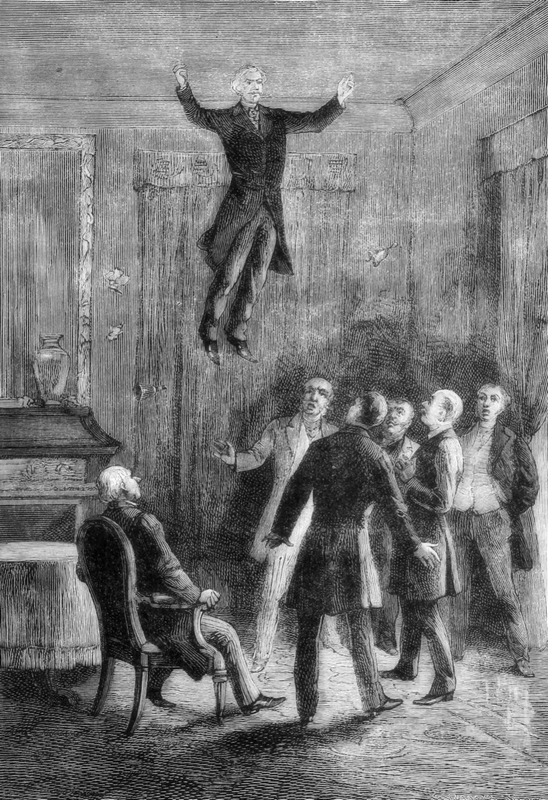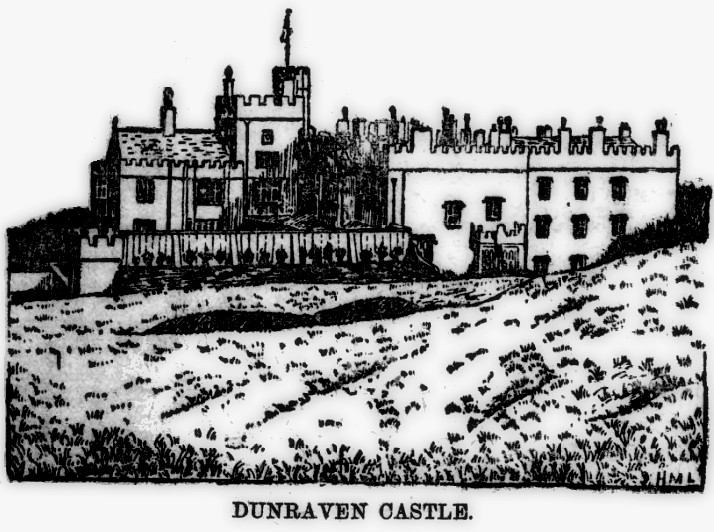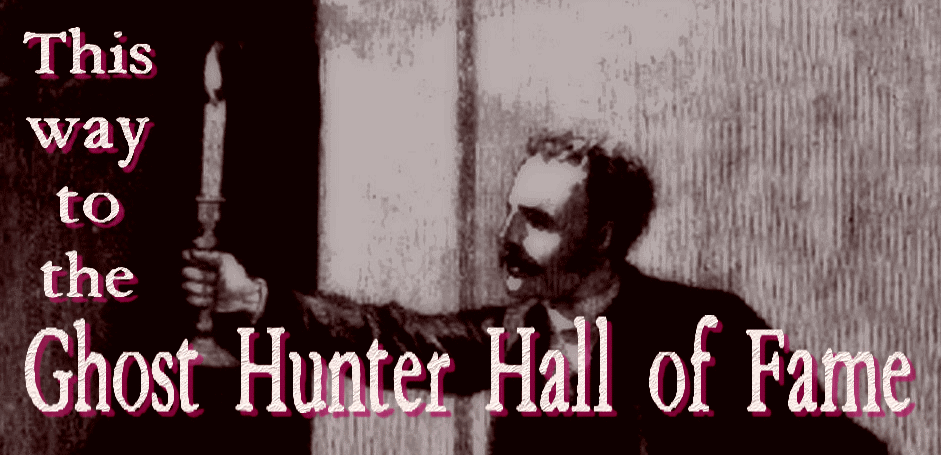
Ghost Hunter Hall of Fame inductee Violet Tweedale explains that she was introduced to ghost hunting by her father. Early in her memoir Ghosts I Have Seen (1919), Tweedale paints a picture — one at least as charming as it is chilling — of the pair sharing “the thrill of nocturnal adventures,” meaning snooping for specters together. Another father who passed the ghost torch to his child was Edwin Wyndham-Quin, the 3rd Earl of Dunraven and Mount-Earl (1812-1871). His son was given the whimsical, if not cruel, name Windham Wyndham-Quinn (1841-1926), and he inherited his father’s earldom. But both are also identified in historical records as the Viscount of Adare, the title that preceded their earldom.
The similarities of names and titles can be confusing, and the workings of the peerage system frazzles my American brain. I’ll do my best to sort out who did what and to suggest how the child followed in his parent’s footsteps by referring to the dad as Edwin and the son as Windham. A timeline of significant events should help, too.
1843: Edwin’s Ghost Hunt
Edwin compiled a report of his investigation of a haunted house in County Clare, Ireland. It was published in The Spiritual Magazine in 1869. According to that report, Mr. and Mrs. Daxon moved to Kilmoran around 1824. Their residence was plagued by a menagerie of spectral manifestations: untraceable sounds of a hungry dog, of human feet, of horse hooves, and of the song of a pet canary that continued to be heard after it had been killed by a cat. A pillow, books, and writing implements were tossed by unseen hands. New noises arose, a clamor seemingly designed to scare off the Daxons: screams! gunshots through glass! and, heaven forbid, bagpipes! Four people experienced the “throwing of the a great weight upon the chest, or some part of the body,” and one time, “Mrs. Daxon felt the pressure of a very cold hand on her back.” The eerie phenomena occurred at both night and day.

All of this information came from letters written to Edwin by numerous witnesses, and he provides ample excerpts of them in his article. Another of the letters, written by the household steward, relates a curious backstory, which Edwin says “may be related to these noises.” A family burial vault was located near the house. There, a coffin had been discovered opened. Worse yet, the steward found a fresh gash across the corpse’s pelvis! Edwin notes an Irish folk belief that “a part of the inside of a body (the liver I believe) gives power of witchcraft.”
This stuff about mutilating a corpse to practice witchcraft is pretty speculative, and Edwin must have become itchy to get more involved. In fact, he says that, “in order to satisfy myself more fully, I went to Kilmoran.” Now, we see him moving beyond an armchair ghost hunter! He says:
After seeing the house I was more than ever alive to the difficulty of attempting to explain the different things that occurred, by attributing them to clever contrivance or mechanism.
He checked the walls. He checked the halls. “The house was not infested by rats,” he declares, ruling out that common cause for falsely branding a house as haunted.
He relates a few more odd occurrences told to him by the Daxons. Perhaps the oddest is something Edwin refrains from clarifying, but he says that “it points to a person as a possible agent; and this person was said by the people to be possessed of the power of witchcraft.” Whoa! Witchcraft again? Is this becoming a witch hunt? In the mid-1800s? That’s something one associates with, say, Joseph Glanvill’s investigation of the Mompesson residence/Drummer of Tedworth case, which happened in the late 1600s! (I’ve written about Glanvill here and witch hunts in general here.) Belief in this kind of witchcraft had virtually disappeared in the 1700s. To be sure, Edwin says he doesn’t “put very much trust in the connection between the noises and this possible cause, nor does Mrs. Daxon.” So probably not a witch. Whew!
A clue about when this in-person follow-up investigation happened is found in this statement:
In April, 1842, not long after I had made an examination of the house, I heard from Mrs. Daxon that the noises had recommenced. . . .
Two maids complained of hearing things in their bedrooms, where “an invisible being” had also “pulled the bed clothes off.” The noises stopped, however, when the irritating apparition was threatened loudly with a pistol. Edwin attributes this last bit of mischief to someone playing a trick, and then he concludes the report.
There’s no indication that Edwin conducted any nocturnal surveillance, that centuries-old method of exploring a possible haunting. His contribution to the history of paranormal investigation, however, is less in his handling of this particular case or the case itself, and more in the influence he had on his son.
1850: Edwin Becomes Earl & Windham Becomes Viscount
Upon the death of his father, Edwin succeeded from Viscount Adare to Earl of Dunraven and Mount-Earl. Young Windham, in turn, became Viscount Adare.
1869: Windham Reports to Edwin on D.D. Home
Windham’s memoir of one of the most famous and controversial Spiritualist mediums was published this year. Titled Experiences in Spiritualism with Mr. D.D. Home, the book’s introduction is written by none other than Edwin, who shows he knows quite a bit about Spiritualism. In addition, in the preface, Windham says that the book grew from letters about Home that he had sent to his father. Clearly, a father-son bond was bolstered by a shared interest in the paranormal.

The book is made up mostly of recaps of a series of séances conducted by Home, all of which Windham attended. Number 41 (pages 80-85) is probably the best known of these, since it was here that Home allegedly floated out of a window in an adjacent room and into a room where Windham waited beside two more witnesses. The incident occurred on December 16, 1868, and ever since, it has received a lot of attention, from believers such as Arthur Conan Doyle (see pages 425-426) to skeptics such as Frank Podmore (see pages 255-258). Though fascinating, it has little to do with ghost hunting. Let me shift the focus, then, to Windham and his connection to one of the most famously haunted sites in the recent history of haunted sites.
1871: Edwin Dies & Windham Becomes Earl
Upon Edwin’s death, Windham succeeded to the title of the 4th Earl of Dunraven and Mount-Earl.

1872: Windham Breaks Ground for the Stanley Hotel
Windam traveled to the U.S. and, specifically, to Colorado. He was more interested in hunting big game than ghosts, and he became enchanted by the idea of owning his own wildlife preserve. With this in mind, over the next few years, he managed to acquire a huge chunk of what is now the Rocky Mountain National Park. (In that park, one can climb Mount Dunraven, named for Windham.) His methods of accumulating land were suspect, though, and the legal complications arising from them grew.
He opted instead for starting a mountain hotel, one that would capitalize on the area’s soaring tourism. The Estes Park Hotel opened in 1877. Litigation concerning his land dealings continued, though, so Windham sold the hotel to F.O. Stanley and returned to Ireland some time afterward. In 1911, that original hotel burned down, but Stanley decided to rebuild and to dub the sprawling, new structure the Stanley Hotel.
Yes, that Stanley Hotel. The one that inspired Stephen King to write The Shining (1977). The one that continues to draw ghost-hunting pilgrims from far and wide.

1926: The Echoing of Fathers
And there’s still another haunted site to discuss! Back in 1810, Windham’s Irish grandfather, Windham Henry Quin, married a Welsh woman named Caroline Wyndham and then assumed the name Windham Wyndham-Quin. Now, you see where our Windham Wyndham-Quin got his echo of a name. That grandfather didn’t just get a bride, however — no, there was a castle in Wales that came with her. It was called Dunraven Castle, and Edwin inherited it from his father, and Windham inherited it from his father.
Windham went on to write a history of the castle. Perhaps with his father’s 1843 haunted house report in the back of his mind, he devoted a short section of the book to his collection of witness testimony regarding an apparition observed there (see pages 52-55). The ghost was given one of the finest names any ghost can hope for: the Blue Lady of Dunraven.
During World War I, the building was used as a convalescent hospital for soldiers, and — though Windham says reports of the ghost go back earlier — he cites these patients, their nurses, and a former caretaker as primary witnesses. Echoing what his father had done all those year ago, Windham presents excerpts from their letters. The witnesses describe the Blue Lady as “quite calm and in no way troubled,” as “a lovely spirit and nothing to be afraid of,” and as emitting a fragrance decidedly like “mimosa.” Presumely, that refers to the plant, not the cocktail. Windham ends this section by saying the testimony is too “remarkable” to be waved off as “mere hallucinations or the result of over-wrought nerves.” Still, he leaves any final ruling to others with a penchant for ghosts.

Sadly, only some ruins of the castle can be visited today. And yet castle ruins are ghostly, right? And the Stanley Hotel offers “ghost” tours of their properties! Remaining with us are faint echoes of Edwin and Windham Wyndham-Quin’s mutual fondness for otherworldly investigation, and their weird and winding story is certainly worth remembering.


